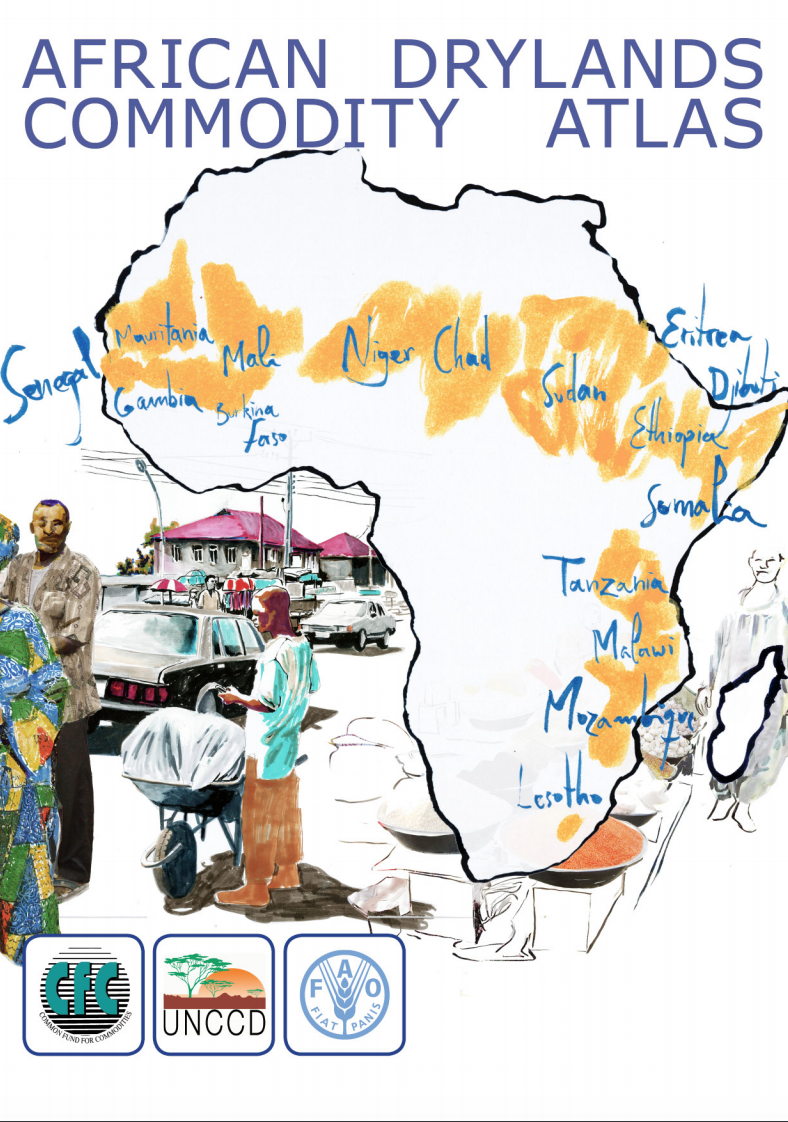Resource information
Desertification is defined as land degradation in arid, semi-arid and dry sub-humid areas, resulting from various factors, including climatic variations and human activities. More than one third of the surface of the earth consists of drylands. In terms of population, one out of every five people of the world live in already degraded or desertification-prone drylands. These people include many of the world’s poorest, most marginalized, and politically weak citizens. For instance, nearly 325 million people in the African continent live in drylands.
In a majority of countries affected by desertification, commodity production is the main source of income. Primary agricultural production involves a large majority of active populations. In general, farm productivity in many Least Developed Countries (LDCs) with dryland conditions has remained low, and occasional growth has been achieved mainly from increasing the area under cultivation. Low productivity can be attributed to inter alia, use of inappropriate exploitation methods and lack of adequate techniques and technologies, as well as unfavorable weather conditions. Insufficient and unstable income is often caused by low level of processing, high transaction costs and limited accessibility to markets.
Despite a recent upward trend in commodity prices, the last decade has also witnessed a steady decline in the dollar values of traditional agricultural export crops from dryland LDCs and highlighted the risks of dependency upon a narrow export product base for foreign exchange earnings. Breaking the dependency on traditional primary unprocessed products and diversifying into higher value or added value exports will be of considerable importance for economic growth in the dryland LDCs. Value addition to produce from dryland areas through agro-based industries, particularly small scale industrial initiatives targeting specific commodities and regions, also represents an important aspect of support to livelihoods.
The Dryland Commodity Atlas seeks to facilitate the on-going stakeholder dialogue process and to build consensus for commodity strategies that integrate the trade potential of dryland commodities into relevant national policy areas and the National Action Programs (NAPs) to combat desertification. For trade to have an impact on poverty reduction in LDCs, it needs to be an integral part of each country’s development strategy, and it also needs to be integrated in the relevant commodity strategies and NAPs. This requires raising awareness and information exchange to promote active engagement on several fronts by a wide range of diverse stakeholders.
The atlas also highlights the potential for and the weakness of trade within the African continent. In this regard the lack of regional African markets and the effects thereof on farmers and herdsmen in the rural areas is clearly illustrated in the atlas. The development and creation of local and national market demand can foster specialization and diversification of new agricultural products resulting in increased income and investment capacity for rural households and can also support poverty reduction. Farmers all over the world are sensitive to market signals, and when there are sufficient incentives, they always invest effort and capital to improve land use management and the cultivation of higher value crops. Both the Common Fund for Commodities and the United Nations Convention to Combat Desertification believe that the Dryland Commodity Atlas will be a crucial and useful tool for developing the necessary awareness to support capacity building relating to trade and markets taking into account the productivity and trade in the overall national development strategies, as well as in the context of the National Action Programs to combat desertification in LDCs. We hope that the publication will enhance the understanding of national policy makers in dryland LDCs, development partners and other stakeholders on the possibilities and potential opportunities to achieve poverty reduction through environmentally sustainable and economically profitable commodity production drylands.


